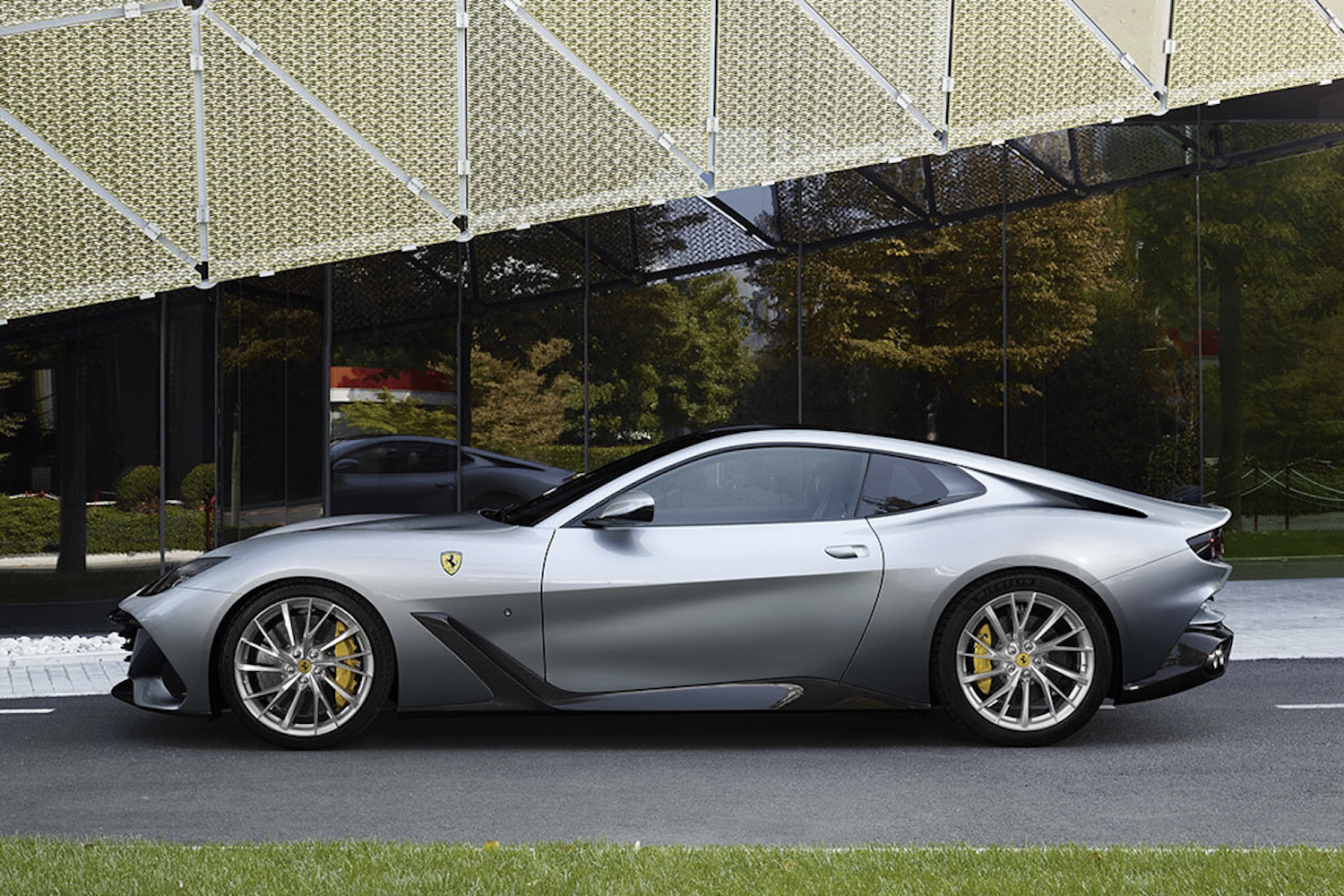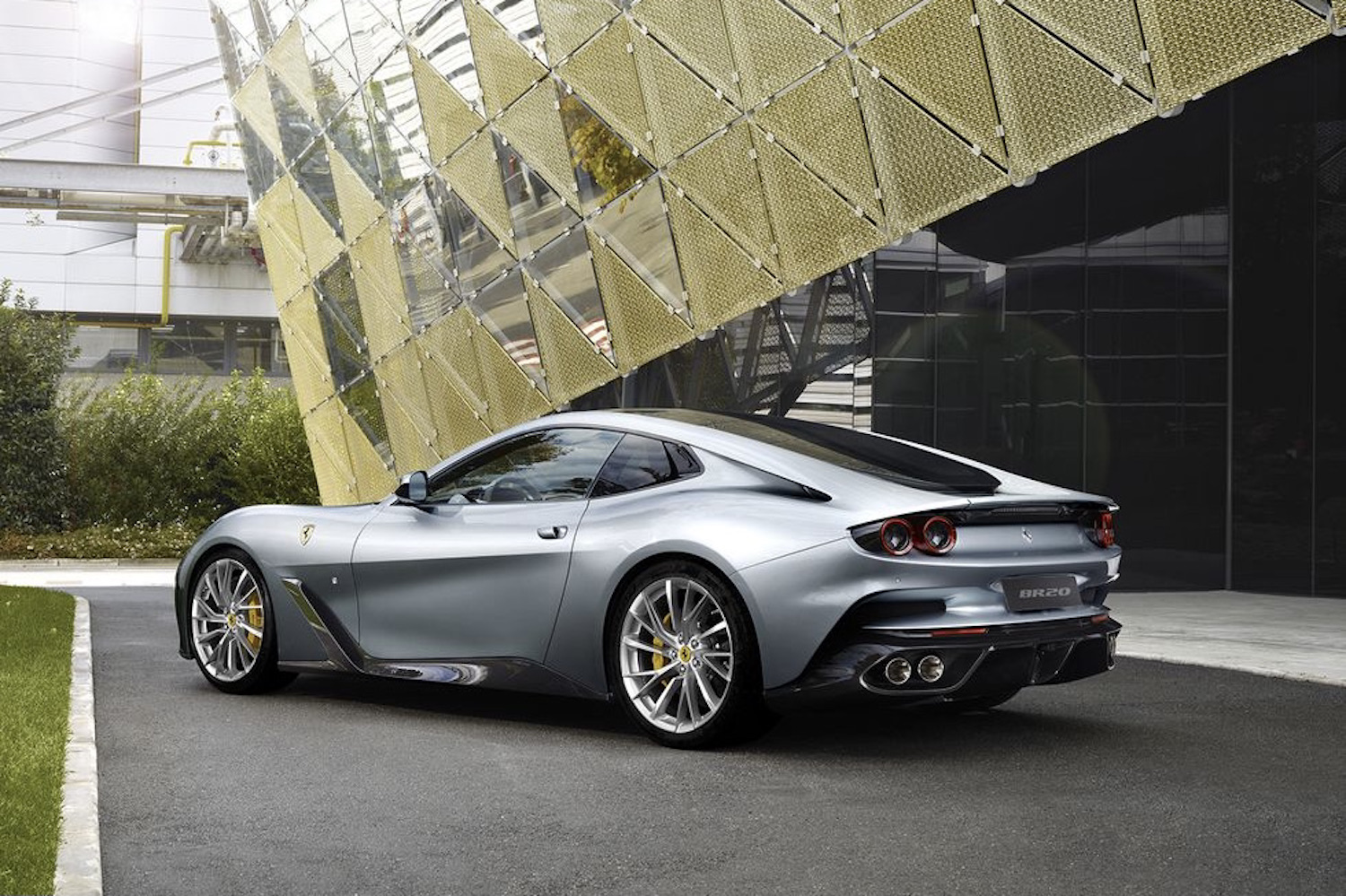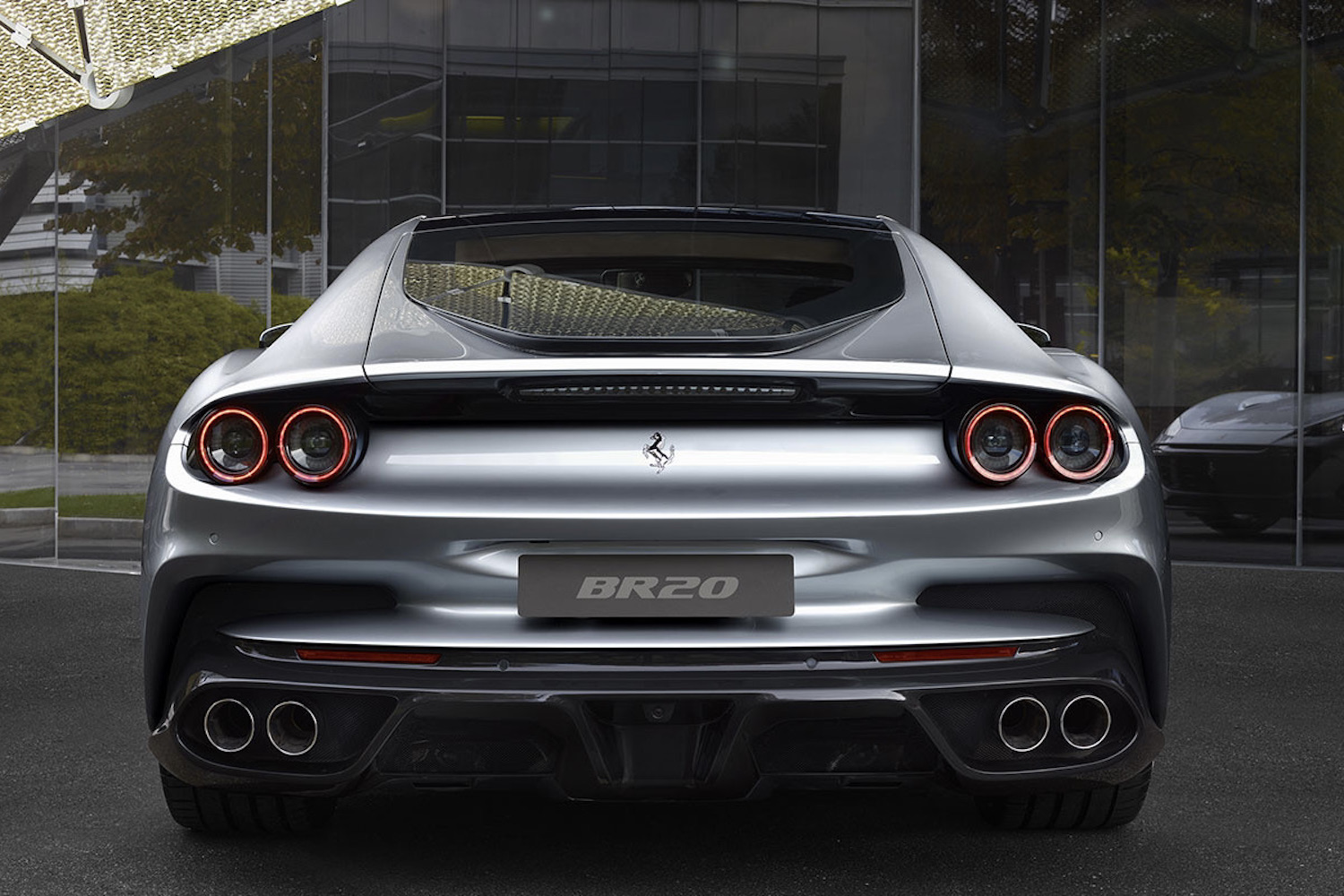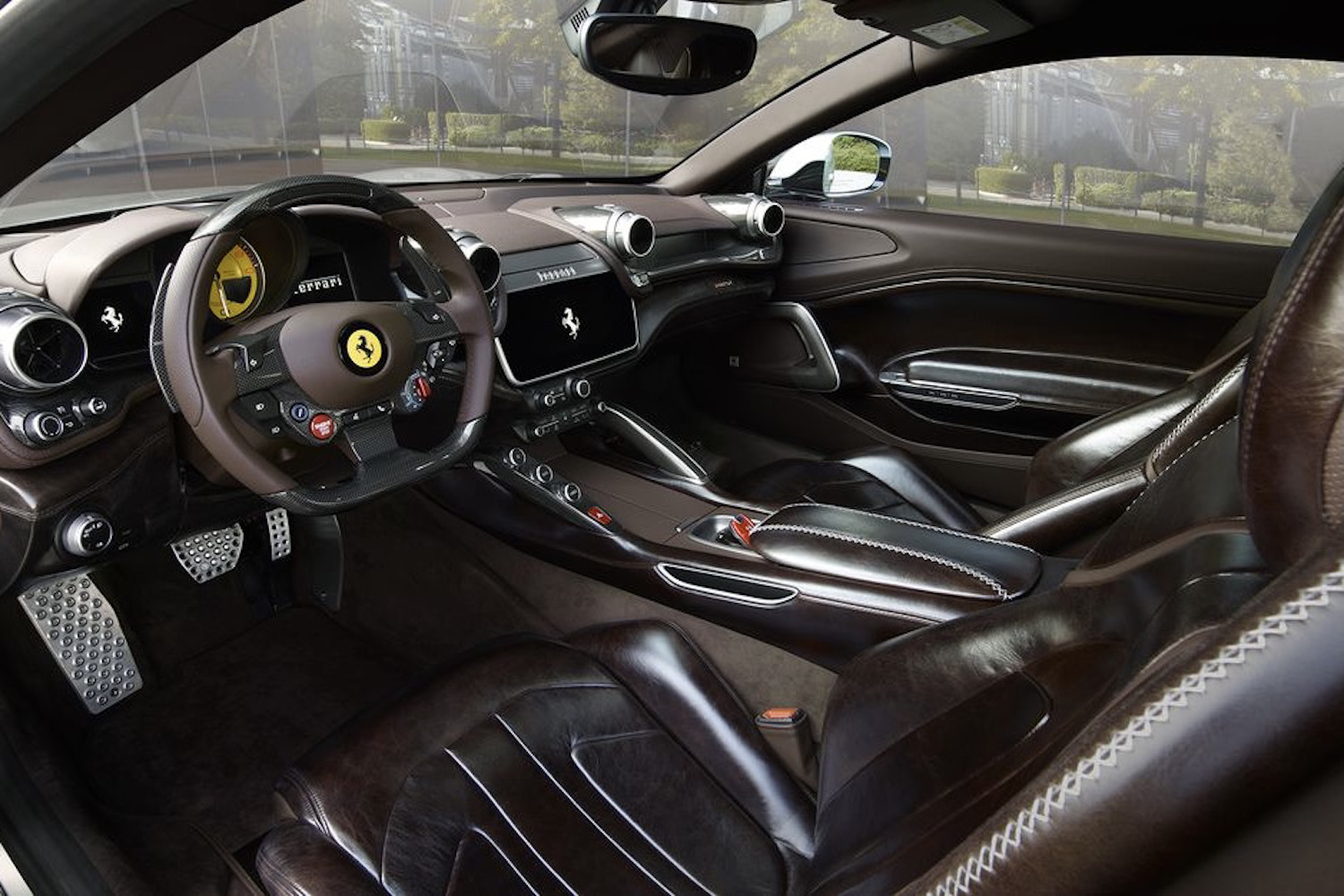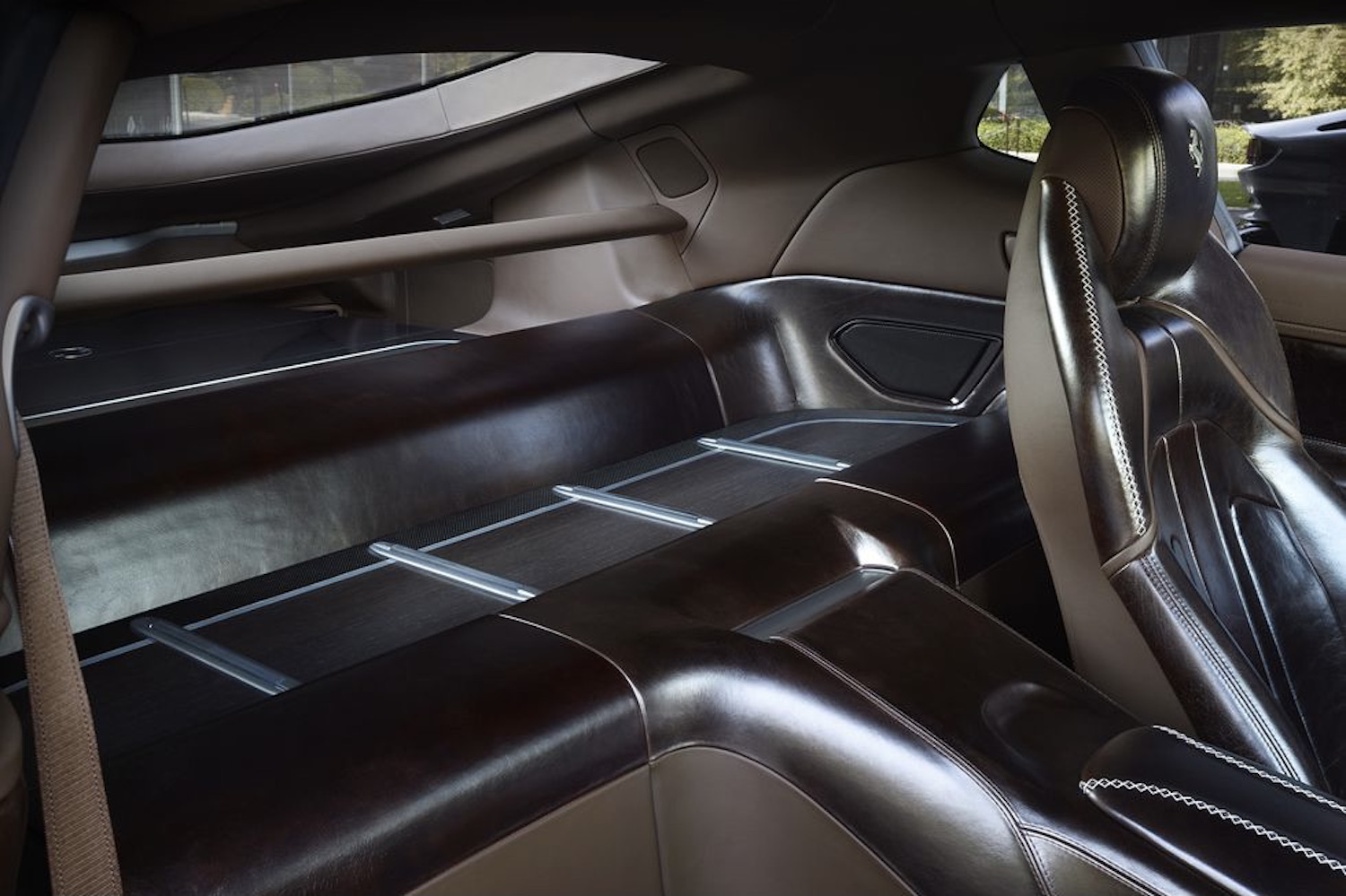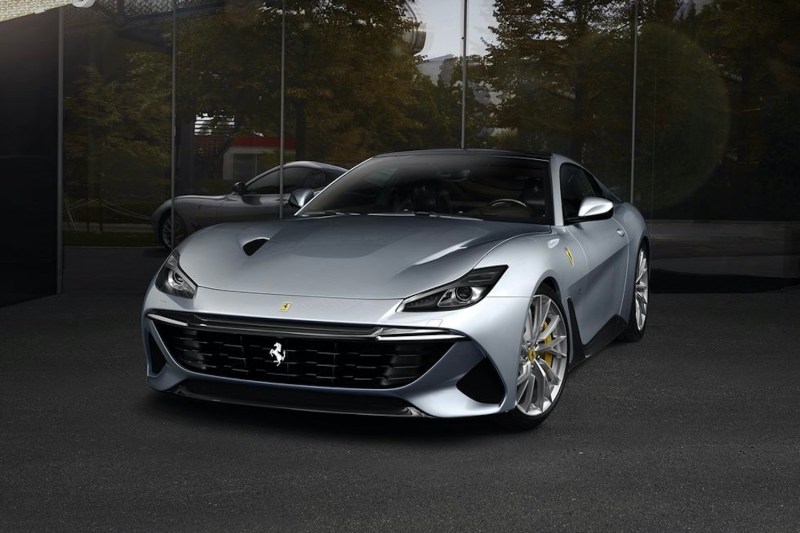
The majority of people can only dream about affording a Ferrari. The Italian marque sells roughly 10,000 vehicles a year to the lucky few worldwide. While the majority of people would be happy to own a Ferrari, a select few, we’re talking 1% of the 0.01%, get Ferrari to build a one-of-a-kind supercar. Ferrari usually makes a one-off car every year for someone. Last year, there was the 812 Superfast-derived Omologata and in 2019, we saw the P80/C based on the 488 GT3. For this year, someone’s getting the BR20.
Related Guides
Ferrari started off with an unusual base for the BR20. The supercar is based on the discontinued GTC4Lusso. In its time, the GTC4Lusso was criticized for its grisly design, despite being able to seat four people comfortably and pack a V12 engine. Maybe Ferrari wanted another crack at the GTC4Lusso to prove that the supercar could look pretty with the right nip and tuck. Either way, the BR20 is a sultry coupe that’s meant to pay homage to the coupes that Ferrari made in the ‘50s and ‘60s. Ferrari specifically calls out the 500 Superfast and 410 SA.
To make the BR20, Ferrari got rid of the GTC4Lusso’s hatchback-wagony rear end and replaced it with a far more exotic roofline, similar to the 812 Superfast. You can spot a hint of the old-school design in the BR20’s front end, with its gaping, catfish-like grille and roofline that looks like it never ends. The flying buttress seems to have a shared design with the 599 GTB, helping airflow all the way from the front of the supercar to the back. Ferrari found a way to incorporate classic elements into a thoroughly modern car without any of the cliche retro elements. The BR20 has a few cues that are unique to the vehicle, like the exhaust tips, 20-inch wheels, and headlights.
With the BR20 adopting a rakish roofline, the supercar ditches the GTC4Lusso’s rear seats. Instead of those, there’s an oak and carbon shelf to store the goods for a very small picnic. The cabin should feel nice and airy, as the BR20’s wheelbase has been stretched by three inches. The interior is finished in Testa di Moro, a gorgeous shade of dark brown leather with silver cross-stitching and loads of carbon fiber. The overall interior design of the BR20 is nearly identical to the GTC4Lusso’s, which still looks good in the modern age of Ferraris.
Ferrari didn’t share if it made any changes to the GTC4Lusso’s 6.3-liter V12 engine, but it’s not like it needed more power. The naturally aspirated V12 develops 681 horsepower and 516 pound-feet of torque. At the time, the GTC4Lusso was one of the few Ferraris to come with all-wheel drive. If Ferrari kept the drivetrain the same, the BR20 would be one of the few Ferrari-badged coupes to send power to all four wheels. Needless to say, the BR20 will have incredible performance.
There are a few other things that Ferrari is keeping a secret. For one, we don’t know how much the car costs. But it’s probably the same as a modestly sized house. We also don’t know who Ferrari built this car for. With the scrumptious interior, V12 engine, and grand touring-inspired design, we can only hope that the owner racks up a few miles in this special vehicle.
